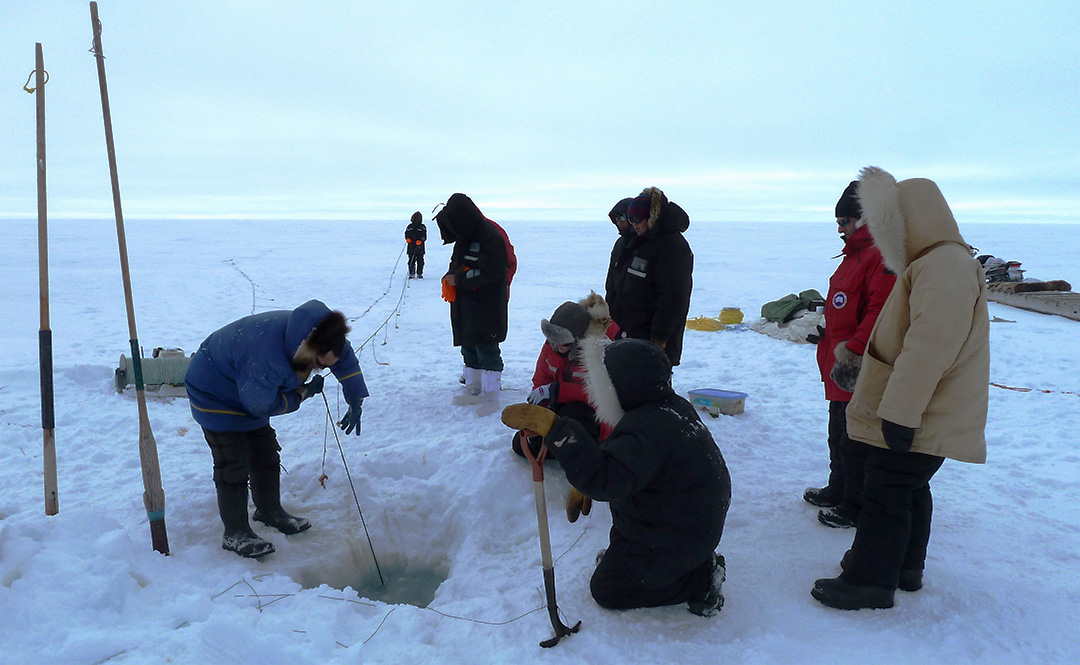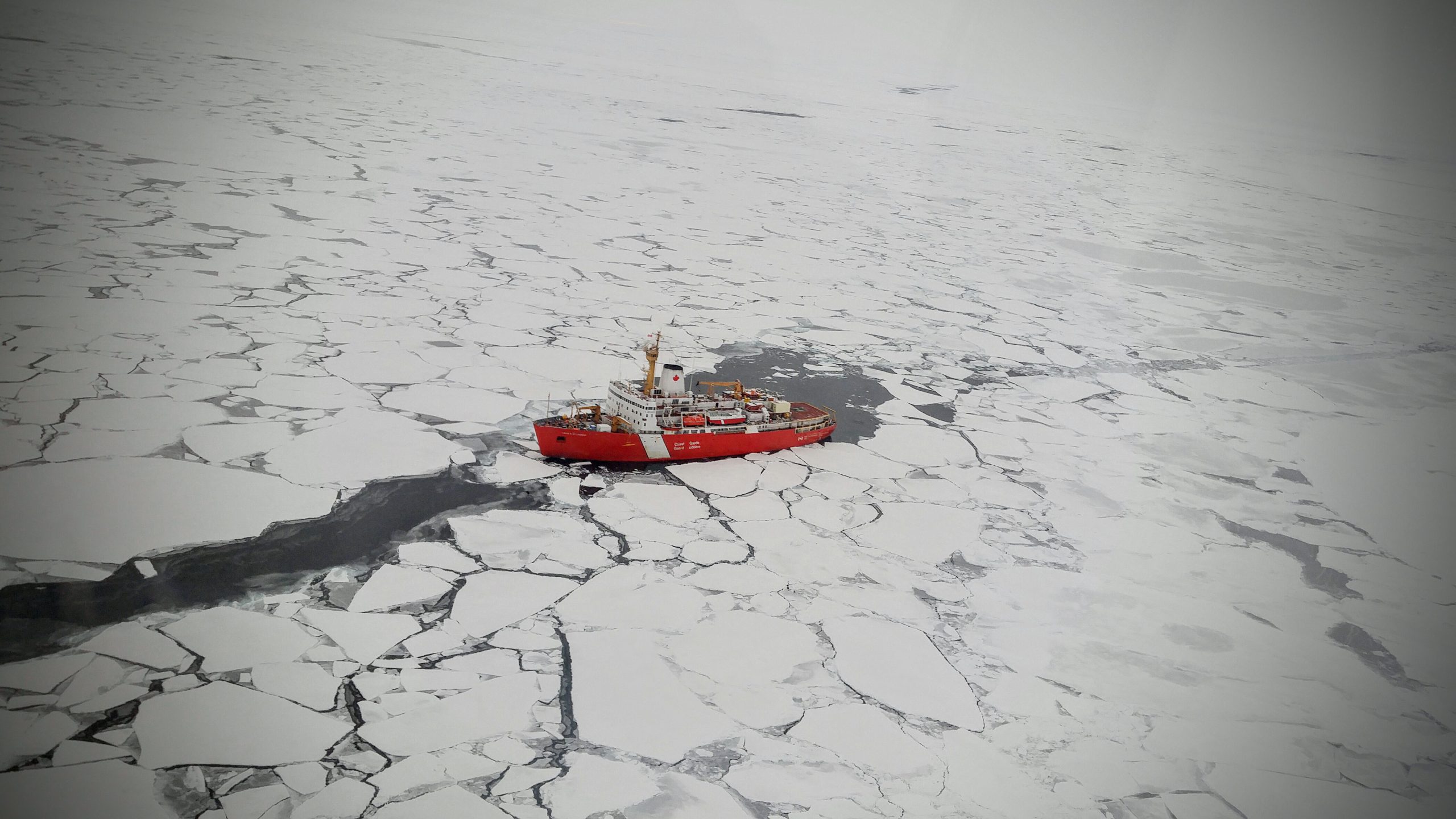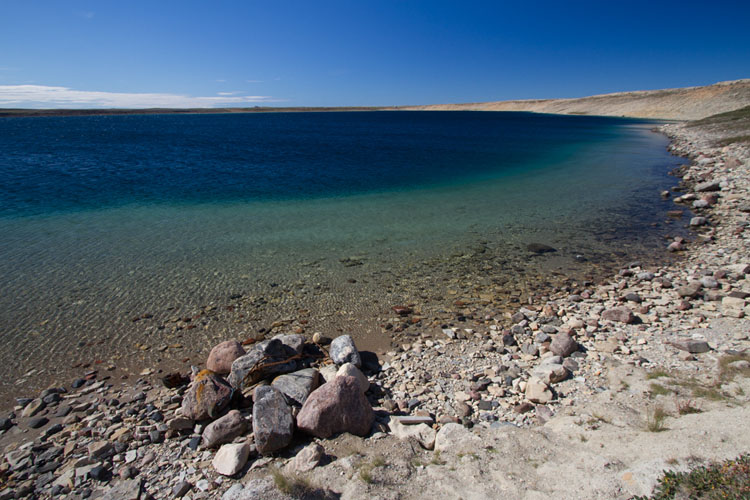
Arctic Diving: “Lots of Sheep in the Paddock”
By Justin Lisaingo, Vancouver Aquarium biologist and diver
Since we arrived in Cambridge Bay on August 3rd, the dive team has been busy setting everything up. We picked up our shipment of equipment, set up a life support system — for temporarily holding live animals — in the storage shed (while getting eaten alive by mosquitos), inspected dive tanks and unpacked coolers in 39 km/h gusting winds which made it challenging.
We met with local divers to test out our new gear. We have new regulators specifically designed to withstand freezing. While testing them out we found that they were forming little ice crystals on our tongues like snowflakes, which meant that they were working properly. The regulators are engineered to break up any ice that forms before it causes problems.
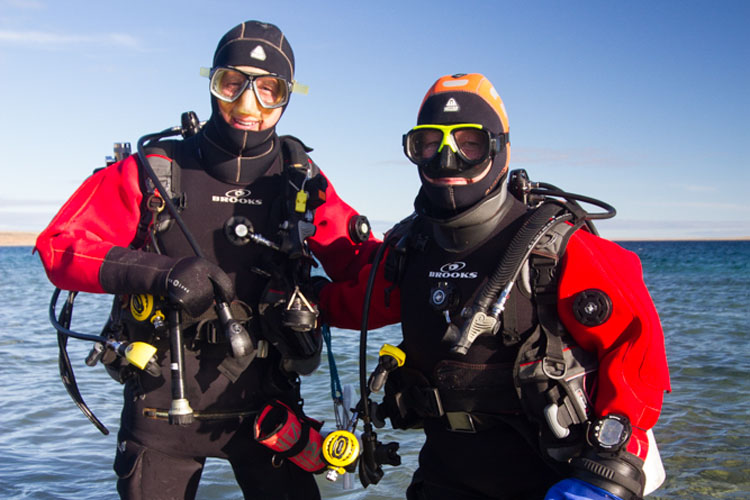
On our fifth day we woke up to howling winds and “lots of sheep in the paddock,” a sailor’s term for choppy seas with cresting waves. Our guide advised us against braving the seas, so we fell back on our back up plan of doing a shore dive in the more sheltered west arm of Cambridge Bay.
One thing made very clear to me as the new guy on this Arctic expedition, is that it is very important to have a backup, to the backup, to the backup plan. You never know what’s around the bend up here and it’s not necessarily easy to adapt on the fly in an unfamiliar place with a scarcity of supplies.
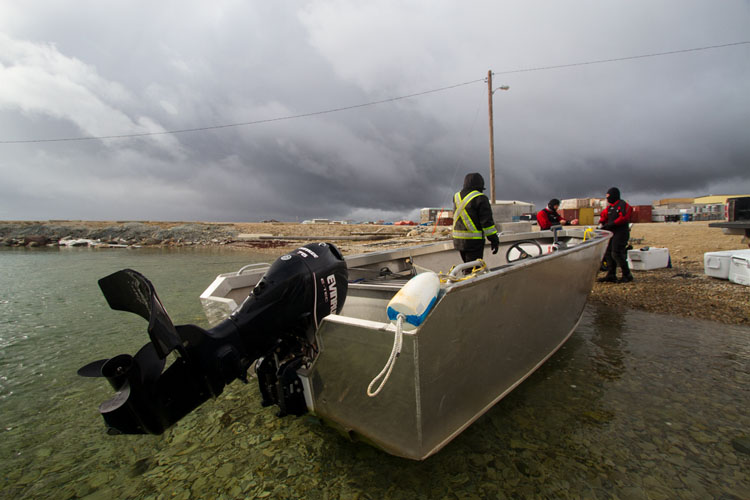
Our boat operator and guide, John Lyall Jr. is a very friendly and experienced local Inuk from Cambridge Bay. He usually takes us out on his own boat, a 22 foot aluminum hulled vessel named UGYUK, which is the Inuktitut word for “bearded seal.” To switch things up, we took him for a ride up the inlet instead and benefited from his knowledge of the area and its biology as well as the people who live here.
We learned that the affectionate name he used for the beach we dove at is Bone Cleaner beach. He explained that local hunters and trappers like to throw the skulls and bones of various animals into the water there to allow the amphipods, crabs, and other marine opportunists to clean the bones for the hunters to later retrieve. The remnants can be used by the Inuit for many different purposes — carvings, lawn ornaments, jewelry, and tool handles.
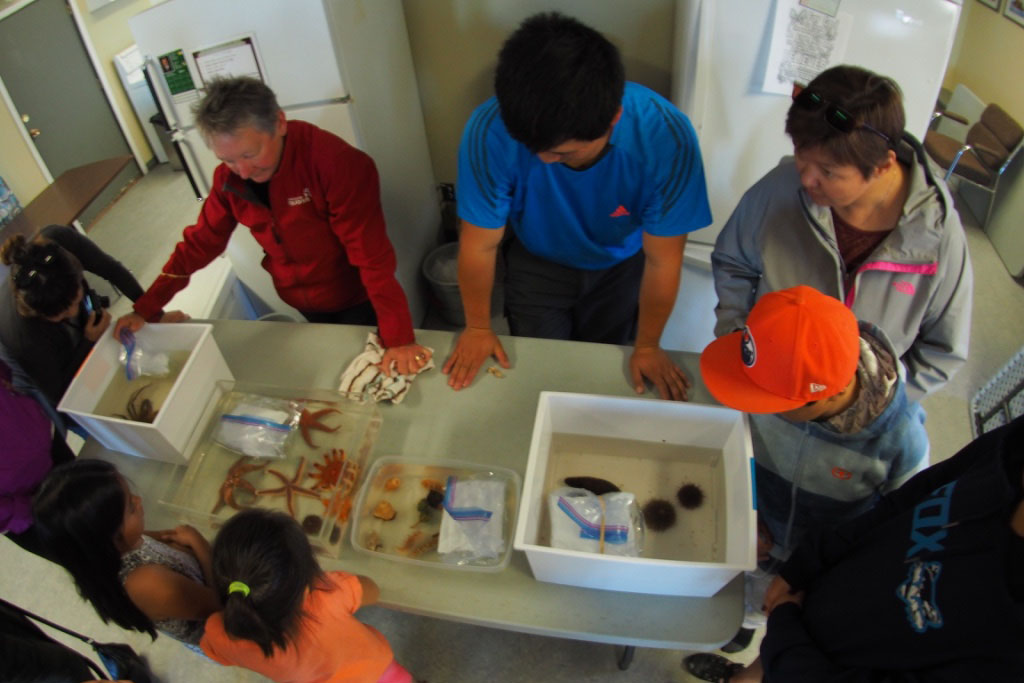
The dive we did at Bone Cleaner beach was rich with planktonic life and we were able to collect a nice assortment of animals that we plan to display for the community members in a couple of days during an evening open house at the Elder’s place. While we were there we also scouted out some promising dive sites for the upcoming days in case we get blown out by strong winds again.

The sun sets around 11pm in Cambridge Bay, the team took a stroll as the light faded, painting the clouds hot pink and yellow. We came across an amazing diversity of lichen and low lying plants that make the tundra plain, not plain at all. We couldn’t help but marvel at the ingenuity it must have taken for these resilient people to thrive in a land that can be unforgiving and hostile at times, yet lush and dramatic at others.
With global temperatures on the rise, we’re racing against time to gain insight about one of the least scientifically understood regions on the planet: the Arctic. This month, scientists from Vancouver Aquarium Marine Science Centre head north to expand upon innovative Arctic research projects started in 2015, in collaboration with Polar Knowledge Canada (POLAR), the federal agency responsible for advancing Canada’s knowledge of the Arctic and for strengthening Canadian leadership in polar science and technology. This blog series chronicles our scientists’ time and research efforts in the Arctic.
Posted August 15, 2016 by Vancouver Aquarium

